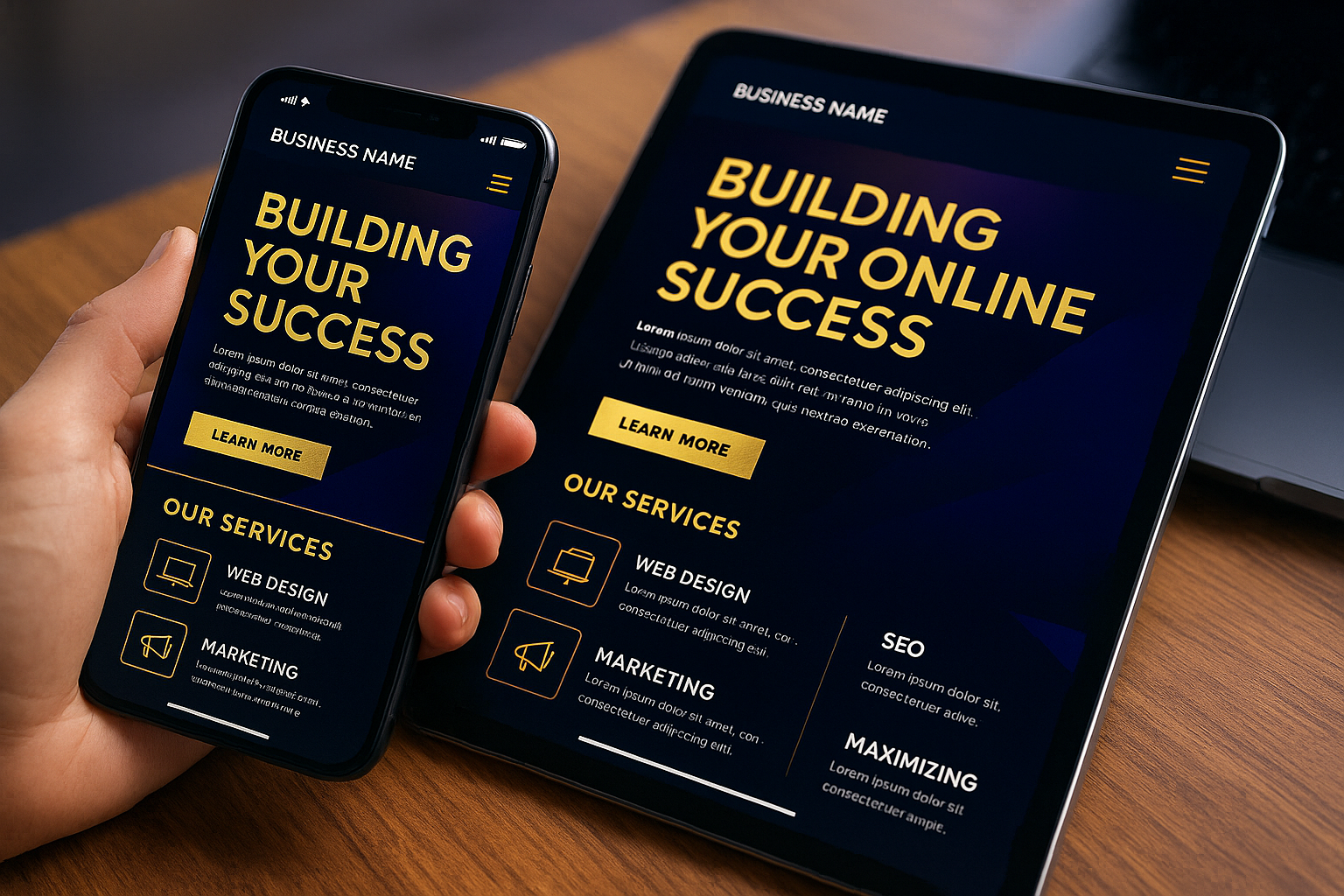Mastering Digital Marketing in 2025: A Guide for Business Owners
From SEO to Social Media: What Works Best in 2025

By Gregory Guidry (Yes Digital Works) | Reading Time: ~6 minutes
In today’s digital-first marketplace, a strong online presence isn’t a luxury—it’s a necessity. Customers are searching, scrolling, and shopping on the web more than ever. For business owners, this means mastering digital marketing is key to staying competitive and growing your business. From boosting your visibility on Google to engaging customers on social media, the right strategies can help you reach more people and turn clicks into customers. The good news? You don’t have to be a tech wizard or have a huge budget to see results. You just need to focus on the areas that matter most and do them well.
Build a Strong Digital Foundation
Before diving into fancy marketing tactics, make sure the basics are covered. Start with a professional, mobile-friendly website that clearly showcases what you offer and how customers can contact you. Think of your website as your digital storefront—it should load quickly, look good on a phone, and make a great first impression. Next, claim and update your Google Business Profile (formerly Google My Business). This free listing ensures your business appears in local searches and on Google Maps with accurate information. An updated profile (with your hours, location, photos, and reviews) can significantly boost local visibility and credibility. Finally, secure your business name on key social platforms (even if you’re not active on all of them yet) to protect your brand identity online. In short, a solid foundation—website, local listing, and consistent branding—makes it easy for customers to find and trust your business from the start.
Boost Your Visibility with SEO
If you want people to find your business online, search engine optimization (SEO) is a must. SEO is all about improving your website so that it shows up higher on Google when people search for the products or services you offer. Why does this matter? Because most people turn to search engines first to discover new businesses. By using relevant keywords on your site, optimizing page titles and descriptions, and earning a few quality backlinks (like mentions on other reputable sites), you increase your chances of ranking well. Also, consider some local SEO tactics: for instance, including your city or neighborhood name in your website content can help attract nearby customers looking for what you provide. Keep in mind that SEO is a long game—it might take a few months to see big results, but the payoff can be significant in sustained, free traffic. The industry’s growth reflects its importance: the global SEO market is projected to reach over $122 billion by 2028 . By focusing on SEO, you ensure your company isn’t invisible on the web’s number one discovery tool.
Connect with Customers on Social Media
Your customers aren’t just using Google—they’re also spending hours on social media. In fact, the average American spends more than two hours per day on social platforms . For business owners, this is a great opportunity to build relationships and increase your brand’s visibility. Rather than trying to be everywhere at once, start with one or two social media platforms where your target audience is most active (for example, Facebook for local community reach, LinkedIn for B2B networking, or Instagram for a younger crowd). Post engaging content that provides value—think helpful tips, quick how-to videos, customer stories, or occasional promotions. And remember, social media is a two-way street, so respond to comments and messages to show there’s a real human behind your brand. Consistency matters more than posting every day for a week and then going silent. A steady, reliable presence (even just a few posts per week) keeps your business on people’s radar and, over time, can drive traffic to your website while turning casual followers into loyal customers.
Create Valuable Content to Build Trust
One of the smartest ways to attract and retain customers is by creating valuable content. This strategy, known as content marketing, involves sharing useful, relevant information that educates or entertains your audience. For example, you might publish a blog post answering common questions in your industry or share a short video with tips related to your products. By offering insights or advice (rather than constant sales pitches), you position your business as helpful and knowledgeable. Great content not only builds trust with potential customers but also boosts your SEO—since search engines favor websites that regularly publish quality content. The key is consistency and relevance: even a short monthly blog post or how-to video can make a difference if it addresses something your customers care about.
Leverage Email Marketing to Nurture Loyalty
While flashy new platforms come and go, email marketing remains one of the most effective digital marketing tools. Building an email list gives you a direct line to people who have already shown interest in your business. With a list of subscribers, you can send newsletters, special offers, or useful updates straight to their inbox. Email is great for nurturing repeat business (think of it as speaking to your VIP customers). It also often delivers one of the highest returns on investment of any marketing channel. To make the most of it, keep your emails short, sweet, and valuable. You might share a quick tip of the week, announce a new product, or offer a subscriber-only discount. Just be sure to get permission (no one likes unsolicited spam) and not to overdo it—people will stay subscribed as long as your emails provide real value.
Consider Pay-Per-Click Advertising for Quick Wins
Building your organic presence via SEO, content, and social media is crucial, but sometimes you want results sooner. This is where pay-per-click (PPC) advertising comes in. PPC platforms like Google Ads or Facebook Ads allow you to display targeted ads to people who are likely to be interested in your business—and you only pay when someone actually clicks. It’s a fast way to get your name in front of potential customers who are searching for keywords related to your products or fit the demographics of your ideal buyer. For example, you could bid on a specific Google search term so your ad appears at the top of results, or run a targeted Facebook ad campaign in your local area. The big advantage of PPC is immediacy: you can drive a surge of traffic (and even generate sales or inquiries) within days rather than months. Plus, you have control over your budget and can start small—say, a few dollars a day—and then scale up if you’re seeing a good return. To avoid wasting money, it’s important to define a clear goal for each campaign (such as getting people to book an appointment or complete a purchase) and to monitor your results. When used wisely, PPC can be a powerful complement to your organic marketing efforts, delivering quick wins while your longer-term strategies ramp up.
Use Data and Smart Tools to Refine Your Strategy
One of the biggest advantages of digital marketing is that almost everything is measurable. By looking at your analytics, you can figure out what’s working, what isn’t, and how to improve your results over time. Free tools like Google Analytics (for website traffic), social media insights, and email marketing reports show exactly how people find and interact with your business online. You’ll see which marketing channels bring in the most visitors, which content gets the most engagement, and even what time of day your emails get opened. All this data takes the guesswork out of marketing—you can invest more in what’s working and fix or drop what’s not. Even if you’re not a “numbers person,” checking a few key metrics each month can guide smarter decisions. For example, if you notice most of your website visitors come from Instagram, it might be worth putting more effort there; if hardly anyone is opening your newsletter, you can experiment with different subject lines or content.
Importantly, you don’t need pricey enterprise software to get results—many free or low-cost tools are more than sufficient for a small business . Consider incorporating tools like:
- Canva – to create professional-looking graphics easily for your website, blog, or social posts.
- Meta Business Suite – to schedule and manage your Facebook and Instagram posts from one dashboard.
- Mailchimp – to design email newsletters and automate your email campaigns.
- Google Keyword Planner – to research popular search terms, helping you optimize your website content and ad targeting.
Most of these tools offer free plans or affordable tiers, so you can get a lot done without breaking the bank. By leveraging smart tools and paying attention to the data, you’ll continuously refine your marketing strategy—working not just harder, but smarter.
Conclusion: Stay Consistent and Keep Adapting
Digital marketing isn’t a one-and-done task—it’s an ongoing process that rewards creativity, consistency, and adaptability. The online landscape can change fast, whether it’s a new social media trend, a Google algorithm update, or the rise of a technology like AI. The key is to keep learning and be willing to adjust your tactics as needed.
That said, the foundational principles remain the same: know where your customers spend their time, meet them there with valuable content or offers, and build trust by delivering on what you promise. You also don’t need to do everything at once. It’s perfectly fine to start small—perhaps launch a basic website and a single social media profile—then expand your strategy as you gain confidence. The important part is to stay consistent: a little bit of marketing done regularly beats a big one-time campaign that fizzles out. By covering your bases across SEO, social media, content, email, and beyond, you’ll put your business in a strong position to thrive online in 2025 and beyond. Remember, digital marketing isn’t magic —but when you do it right, the results can feel almost like magic.










